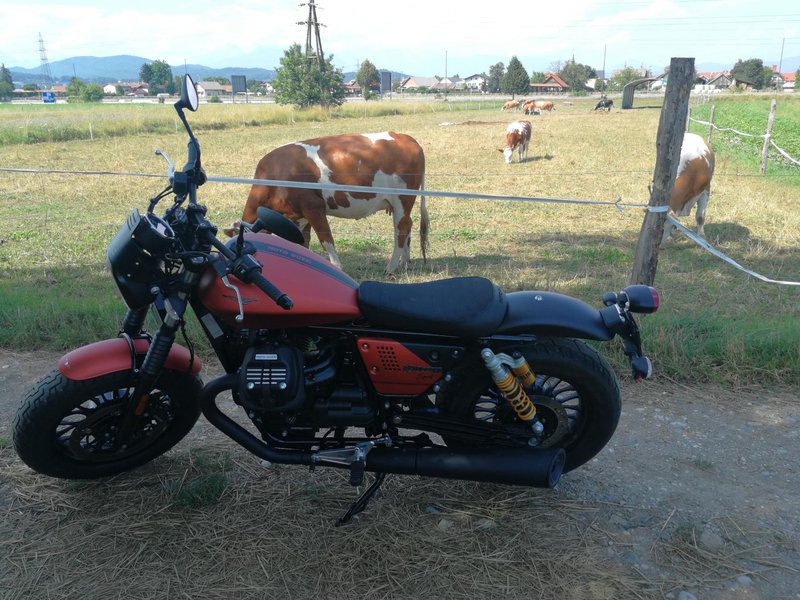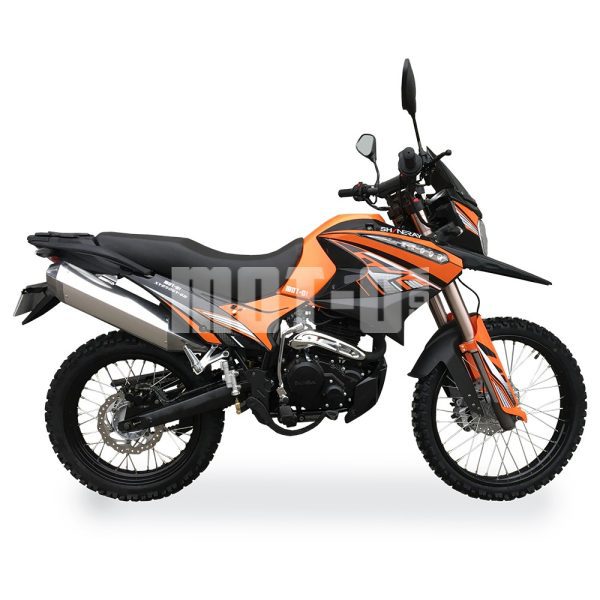
Extended test: Moto Guzzi V9 Bobber Sport // "Boberchek"
Since the "beaver" stayed with us for a long time, I decided to look at it in the introductory article in our magazine. There will be plenty of time to write about your impressions of the road. So let's start from the very beginning. Why is Moto Guzzi, already successfully selling retro V7 models, running away from its customers and only preparing for the shade of the larger V9? However, we are talking only about the difference in volume of 109 cubic centimeters and, in general, about three quiet "horses" of greater power. Well, the answer is relatively simple because he wants to be a V9 cruiser, and the theme of the V7 series models is more roadster-colored.
From a technical point of view, there are few differences between the V7 and V9.... Due to the longer piston stroke, the displacement is larger and larger than the specifications themselves, this increase in size affects the character of the engine. It was supposed that it will be more refined and deeper, but this, as already mentioned, will be another time.
It's no secret that Moto Guzzi has always combined classic and modern in the best possible way, so our Bobber Sport is no exception. It is worth taking the time to get a good look at it, as the experience, and therefore the driving experience, will be different. What Guzzi does in this class, other, less miniature (read Japanese) manufacturers never dreamed of. Wherever you look, whatever you feel and whatever you think about it, it makes sense, has a touch of beauty and exudes the devotion and attention of those who have seen this bike. If you ask me, that justifies the price too.
Look at the colors. The tailpipes, mufflers, flat steering wheel, headlamp socket, rear wing and headlamp cover are painted in modern matte black, complemented by the unique “matt bronze” and enriched with Ohlins gold-gold hue. The fenders and side covers are not made of plastic or sheet metal, but aluminum. Aluminum also adorns the frames of the smooth steering wheel switches. Guzzi knows that a motorcyclist often touches his motorcycle, so the sensation of touching it is pleasant.

Look at the seat. It is true that it is modestly upholstered, but the combination of leather and alcantara works prestigiously. The seat is not only pleasant to the touch, but also non-slip and looks beautiful due to the designer cut. Externally, again a wiring harness? No, you won't find that in Guzzi.
Look at the wheels and mechanics. At first glance, nothing special, but the 22 temples are already very reminiscent of the classic wire rims, or better yet, the lines are such that they are easy to clean. Brembo brakes are there too. For some, it means a lot. In the engine? Despite the fact that it is almost completely black, some details are visible. For example, the valve covers are decorated with screws that show the number of valves in each head of a longitudinally mounted engine. Only a very close look also reveals an inconspicuous USB port, through which you can, if you want, download various information about your Bobber to your mobile phone.
It's time to drive. In the reflection of the glass on the RTV building, I see that with my 186 centimeters I am too big for a "beaver".... But still spacious enough. More on this below.
Basic data
Sales: PVG doo
Base model price: € 9.990 €
Test model cost: € 10.890 €
Technical information
engine: 853 cc, twin-cylinder, air-oil cooled
Power: 40 kW (55 km) at 6.250 rpm
Torque: 62 Nm @ 3.000 rpm
Power transmission: 6-speed gearbox, propeller shaft
Frame: tubular steel
Brakes: front 1 coil 320 mm ABS four-piston Brembo, rear coil 260 mm ABS, two-piston Brembo
Suspension: front telescopic fork, rear swingarm, double Ohlins
Tires: front 130/90 16, rear 150/80 16
Height: 785 mm
Fuel tank: 15 XNUMX liters
Weight: 210 kg (ready to ride)
Questions and answers:
What is the engine on the Mitsubishi ASX? One of the following units is installed under the hood of the model: 1.6 4A924 1.8 4V10; 1.8 4J10; 2/0 4B11 and the largest engine 2/4 4B12. There are also two diesel variants: 4N13 / 4N14.
How much is the Mitsubishi ASX tank? Depending on the configuration, the Mitsubishi ASX gas tank can hold from 58 to 63 liters of fuel. The remaining amount is indicated on the on-board computer screen.
How much power is in the Mitsubishi ASX? The power of a Japanese SUV depends on the powertrain. Gasoline internal combustion engines with 1.6 and 1.8 liters. this figure is 117 and 140. Diesel engines 1.8l. - from 116 to 150 hp
How many Mitsubishi ASX airbags? This model has a decent passive and active safety system. There are 7 airbags in the passenger compartment and one for the driver's knee area.

